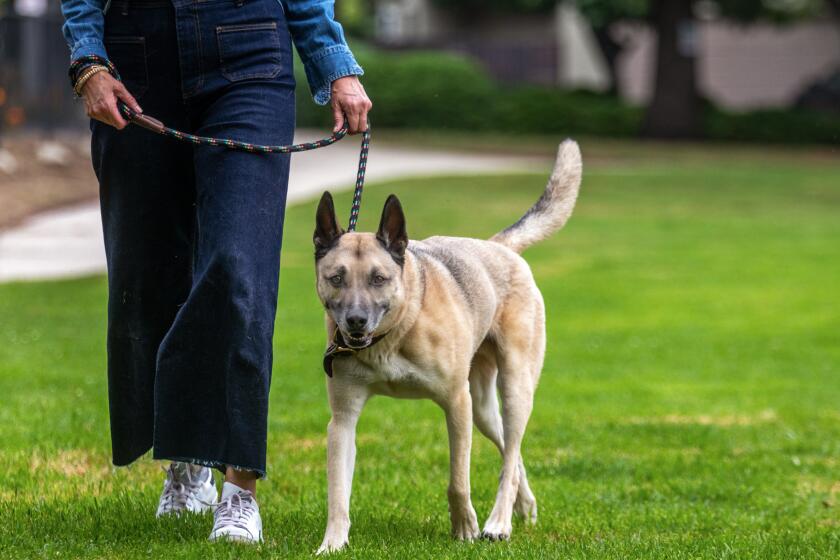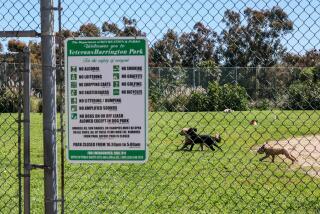L.A. mail carriers lead nation in dog bites

Dogs tend to not appreciate the work ethic that goes into being a mail carrier.
It’s probably why there were more than 5,800 reported dog bites against mail carriers last year, the U.S. Postal Service announced during its annual Dog Bite Awareness campaign last week. Across the nation, Los Angeles led the pack with 65 reported bites.
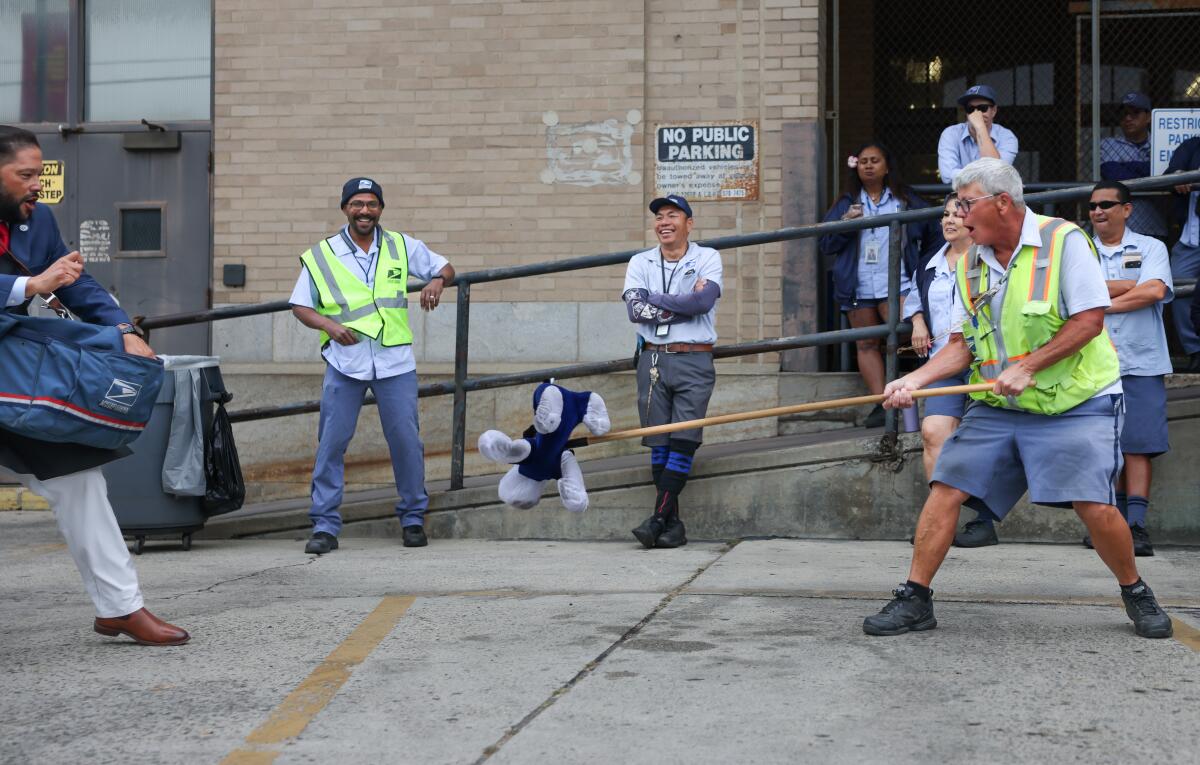
Mail carrier Holly Ahlborn can understand why dogs get defensive. There is an excited energy that comes from walking a mail route, she said, and dogs tend to be sensitive to a person’s emotions. To a dog, a mail carrier might come across as a frantic or anxious person as they attempt to walk into a dog’s territory.
“Dogs can sense that aura as we’re trying to do our job,” Ahlborn said outside the downtown Long Beach post office. Long Beach reported 19 dog bites last year, or about 1 every 15 days that mail carriers are on the job.
On a recent morning, more than 40 mail carriers met at the post office loading docks for their daily stand-up meeting. The group watched a safety demonstration on what to do when encountering a dog.
Bites are sending record numbers of Californians to the ER. Here’s how to prevent that from happening to you.
Mail carrier Michael Bereal Jr. explained to his colleagues that they should jingle their keys or rattle a fence to let a dog know that they are in the vicinity. Ahlborn stood nearby holding a plush dog at the end of a long stick.
“The best way to prevent a dog attack is to avoid situations that trigger aggression,” Bereal said.
If that fails, mail carriers can put their mail satchels between themselves and the dog. As a last resort, mail carriers can use an irritant spray if it seems like there is imminent danger. The plush dog went up as Ahlborn barked and Bereal pretended to spray it into submission.
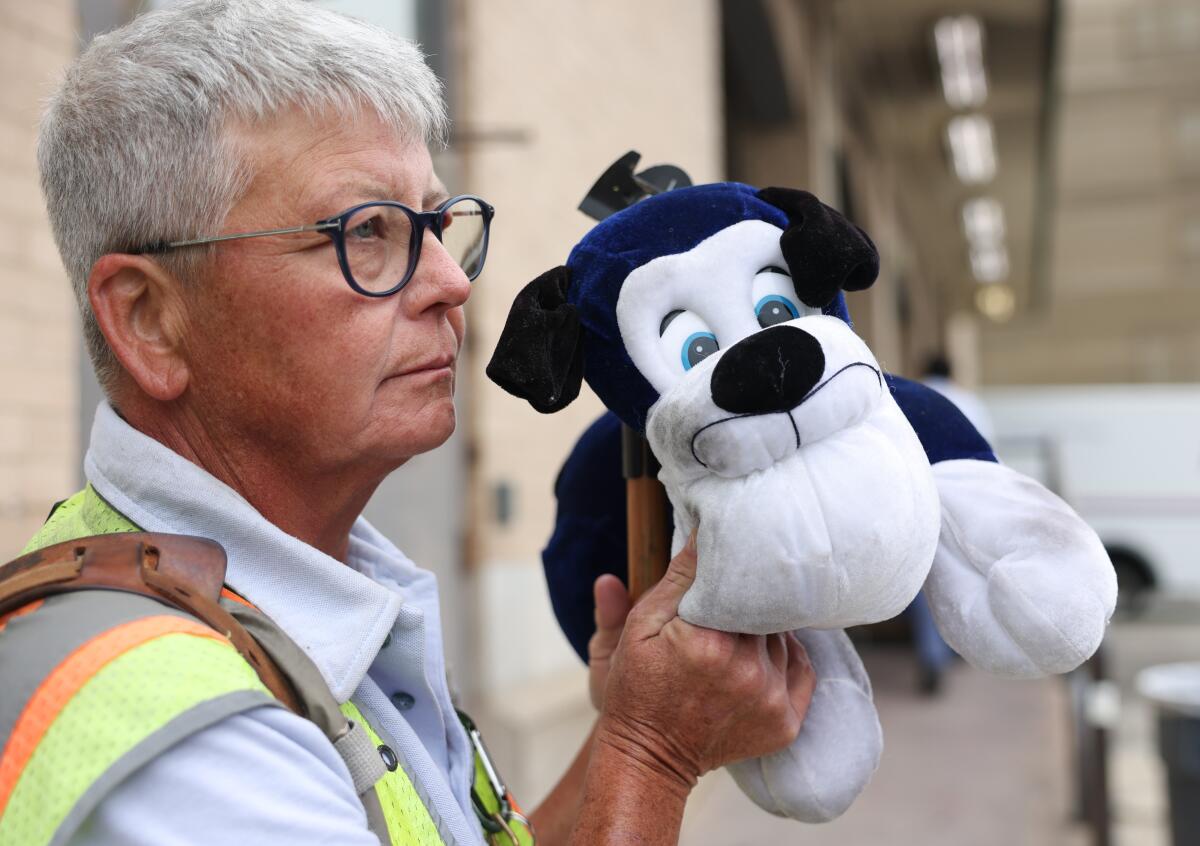
With summer vacation approaching, mail carriers are reminded that children in the home might not be aware of how their pet dog will react when a mail carrier approaches.
“It is really true: Dogs hate letter carriers,” Bereal said with a laugh.
Although he’s never been bitten on the job, he has had some close calls. For example, he once jumped onto the roof of a car to avoid tangling with a large mastiff mix that had hopped over a waist-high fence. The animal’s owner had just finished telling him that the dog was friendly.
That’s usually how things play out, Ahlborn said. An owner will explain that their pet is the exception. “But in the presence of a mail carrier, their ‘fur baby’ turns on us,” Ahlborn said, laughing.
An incident at a Brentwood dog park has turned into a court battle. Was philanthropist Gary Michelson the victim of of extortion? Or did the billionaire, attached to his pet and worried over his public image, use his wealth and legal savvy to evade responsibility for an aggressive dog?
The USPS did not provide any granular data on the 5,800 reported dog bites, such as a breakdown of bites per breed or of the severity of the wounds. Its ranking of cities also looked only at the total number of bites, not the average number of nips per carrier in that city.
In terms of total bites, Houston trailed Los Angeles with 56, and Chicago came in third with 48.
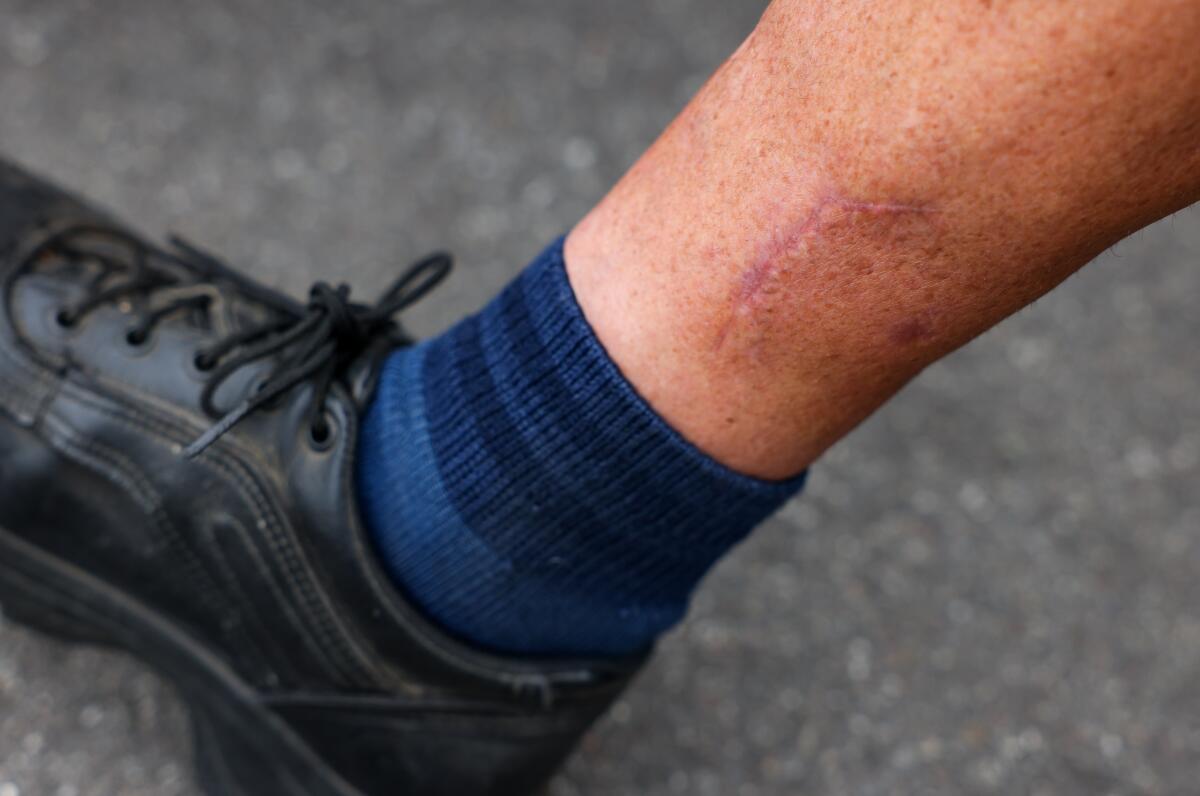
The Postal Service’s theme for its Dog Bite Awareness effort is “Don’t let your dog bite the hand that serves you.”
The Postal Service wants its customers to know that even though dogs are part of the family, they still have teeth and probably don’t understand the concept of mail delivery.
Internal text messages among the carriers can warn about canines on the mail routes, but even then some dogs just fly under the radar.
For example, Bereal said, a pair of pint-sized dogs sneaked up on him while he was delivering mail in an office space, but they only nipped at his legs.
As delivery culture increasingly dominates retail of all sorts, people living at the city’s fractional addresses are left scrambling.
Mail carrier Mimi Ritz didn’t see the dog that tore into her leg before it was too late. She walked into a yard, and as she was leaving the dog came from behind, bit into her calf and threw her to the ground.
“I’m on my butt and I have this dog looking right at me,” Ritz said. “All I could think in my head was, my neck is going to be next.”
She tried to guard herself with her satchel, but the husky mix pulled it away.
Ritz was about to use her irritant spray when a person who lived on the property heard the commotion and pulled the dog away. Ritz called 911 and paramedics treated the gaping wound in her leg. She received a tetanus shot at a hospital several hours after the attack.
Her primary care doctor ordered her to take two weeks off to recuperate. When she returned to work, she went right back to her route, which included the home where the attack happened. This time, however, the mailboxes had been moved to the front of the property. She didn’t see the dog.
She asked someone who lived at the home, “What happened to the dog?”
It turned out that the dog was quarantined in a shelter for several days, but eventually made it back home.
That came as a relief to Ritz, regardless of the attack. If things had turned out badly for the dog, she said, “I was going to be heartbroken.”
More to Read
Sign up for Essential California
The most important California stories and recommendations in your inbox every morning.
You may occasionally receive promotional content from the Los Angeles Times.
